Author Archives: 2010admin
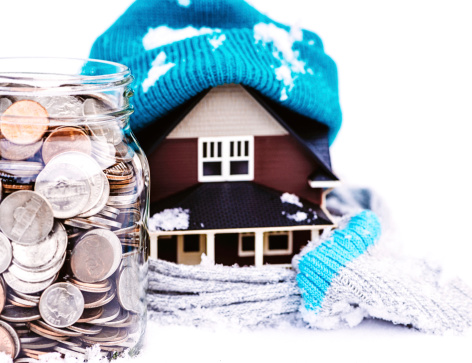
It’s that time again — when falling snow and cooler temps make cozying up with family and friends into the most popular pastime across the Northeast. But as much as we love a good night in, this year it may cost you more than you think. The cost to heat our homes continues to rise, and with the risk of harsh winter conditions and storms damaging your home, it pays to be prepared.
We’re here to offer you some simple and effective tips to help you keep your home warm all season long without racking up a bone-chilling bill.
Invest in a Programmable Thermostat
Life gets busy. Between working, kids’ activities, family trips, and holiday shopping, you’re not always just sitting at home. And there’s no reason for you to have your thermostat cranked up when you’re not even there to enjoy it.
Instead, consider installing a programmable thermostat. According to the EIA’s Winter Fuels Outlook, it will cost $746 on average to heat homes with natural gas this winter, and around $1,268 for those who use electric heating. So any chance you have to minimize how hard and how often your system has to work, the better. Smart thermostats allow you to preset temperatures throughout the day, scheduling temps to lower when you’re not home, which saving up to 20% on the average heating bill.
Upgrade your Boiler
When temperatures drop, there’s nothing quite coming in from the cold and taking a long, hot shower. But your boiler has to work overtime with the excess hot water you use. If your boiler is over 10 years old, it may be time to look for a newer model. Newer models typically use less energy to produce heat and can save you money in the long run. If you aren’t ready for an overhaul of your current model, yearly maintenance services by a professional can keep it running smoothly when you need it most.
Check Your Windows
Did you know that leaks in your windows could be letting in cold drafts? It may not be as obvious as a blustery breeze, but even the smallest of gaps can be causing your system to be working harder than it has to. Sealing the inside of your windows can be the key to lowering your heating bill.
Dead air is a great insulator, so installing plastic film or weather stripping behind the interior window trim or wall can help trap cold air dead in its tracks. You can also invest in storm windows that can be removed after the winter is over. And don’t forget about your curtains! Use them as an extra layer of insulation by shutting them at night but remember to open them during the day. The sunlight is a great way to make use of some free heat.
Use Ceiling Fans
Ceiling fans aren’t only useful in the warmer months. During the warm seasons, ceiling fans evenly distribute and move cool air around the room. But by reversing the blade’s rotation (to a clockwise motion), it can actually push warm air down toward you in rooms with higher ceilings. This is because by switching the blade direction, the fan pushes air up which then forces it to move towards the walls and then back to the ground. It is such a simple way to take advantage of an appliance that doesn’t require a lot of energy to keep your home warm!
Install Door Draft Stoppers
Cold air can sneak into houses through any opening, including underneath your doorways. A quick way to combat this bill-buster is by buying — or making — a door draft stopper. Often called “door snakes,” these stoppers are a beanbag-like sack that can be put at the base of doors that lead to the outside. It closes off air passageways so that cold air doesn’t escape from the outside and into your house.
Add a New Rug
Rugs may just seem like a stylish way to upgrade the aesthetic of your space, but they’re also very effective in keeping your home warmer. Wooden, tile, or ceramic floors can account for a major percentage of heat loss in the winter, so adding this layer of insulation could make a big difference. New décor and a warmer room — win, win.
These easy tips will help you warm up while spending less this winter season. If your heating issues go beyond a simple fix, contact Madsen Inc to speak to one of our team about our affordable heating repairs and installations.
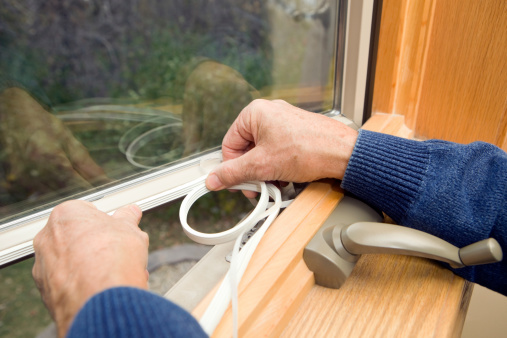
It’s happened once again. Somehow, the cold season has snuck up on us and the chilling temperatures and snowstorms are just around the corner. Whether you’re closing up a vacation home after Labor Day or getting your primary residence ready for the cold, it’s important to properly prepare your home for the harsh winter conditions.
By winterizing your home, you’ll not only help your home stay warm and comfortable, but you’ll also save money on utilities, while preventing costly repairs from possible damage. Here are six areas to focus on when winterizing your home for the chilly risks ahead.
Your Home’s Exterior
When snow piles up, it can make branches heavy and likely to break. Before the weather worsens, make sure to trim away tree branches, especially those that hang over your house. You’ll also want to clean out your gutters and position all downspouts away from your home. When downspouts are too close to your foundation, mold, mildew, dry rot, and water can get into the basement.
Your Doors & Windows
Weatherstripping will prevent cold air from flowing in through the cracks of your exterior doors and windows. But gaps and rips can form from wear and tear of regular use overtime, so make sure you inspect your stripping to make sure it’s secure. You can also use caulk to stop cold-air infiltration and plug up holes, cracks, and open seams around your windows. While it may not be super noticeable, these leaks can make a big difference in your home’s comfort — and your utility bills.
If you’re willing to make a long-term investment, installing storm windows provides an extra layer of protection against cold, snow, wind, and rain. They can be removed once the temperatures begin to rise and often last up to 30 years with quality care.
Your Water Pipes
Alleviate some stress of your hot water pipes by reducing exposure to harsh winds and cold temperatures. Insulating your pipes will minimize heat loss, save energy, and help keep the water hot inside of the pipe. Foam rubber sleeves, heat tape, or insulated wraps are a few affordable ways to ensure that you have hot water all winter long. Pipes in attics or crawl spaces should be top of your list.
Your Faucets
It may be as simple as running a small stream of cold water from your faucet, but by keeping the water in your pipes moving, they won’t have a chance to freeze, which can cause them to break or burst. You only need to do this with one faucet, but make sure it’s in the right location. Turn on a faucet on the opposite end of where your water comes into your house so that in can travel through your entire home water system.
Your Refrigerator
There’s always a possibility that the power will go out during a winter storm and the last thing you need is spoiled food. Make sure your refrigerator is on an energy efficient setting so that you don’t waste any excess electricity. And that optimal refrigerator setting for food safety and energy efficiency is 36 to 38 degrees F. Setting your appliance any lower than that can increase the chance of a power outage.
Additionally, you can change the rubber lining, also known as a gasket, around your refrigerator. The rubber gasket goes around the refrigerator door and creates a tight seal to keep warm air out. When you have a worn-out gasket, your refrigerator must work harder to do so, which will run up your energy bill quickly. By simply cleaning your gasket weekly, or replacing it entirely, you can save yourself some extra money.
Your Thermostat
Programmable thermostats can save you a great amount of money in the winter. These thermostats can be programmed however you’d like. Keep the heat running when your family is home and schedule it to lower when no one is home, which will reduce energy use significantly. Studies show that you can save as much as 10% a year on heating and cooling by simply turning your thermostat back 7°- 10°F for 8 hours a day from its normal setting.
Whether you do it yourself or rely on professionals like our team here at Madsen, winterizing your home will be worth it on your wallet. If you’re interested in preparing your home for the cold but don’t know where to start, contact Madsen for reliable, high-quality, and expert service!
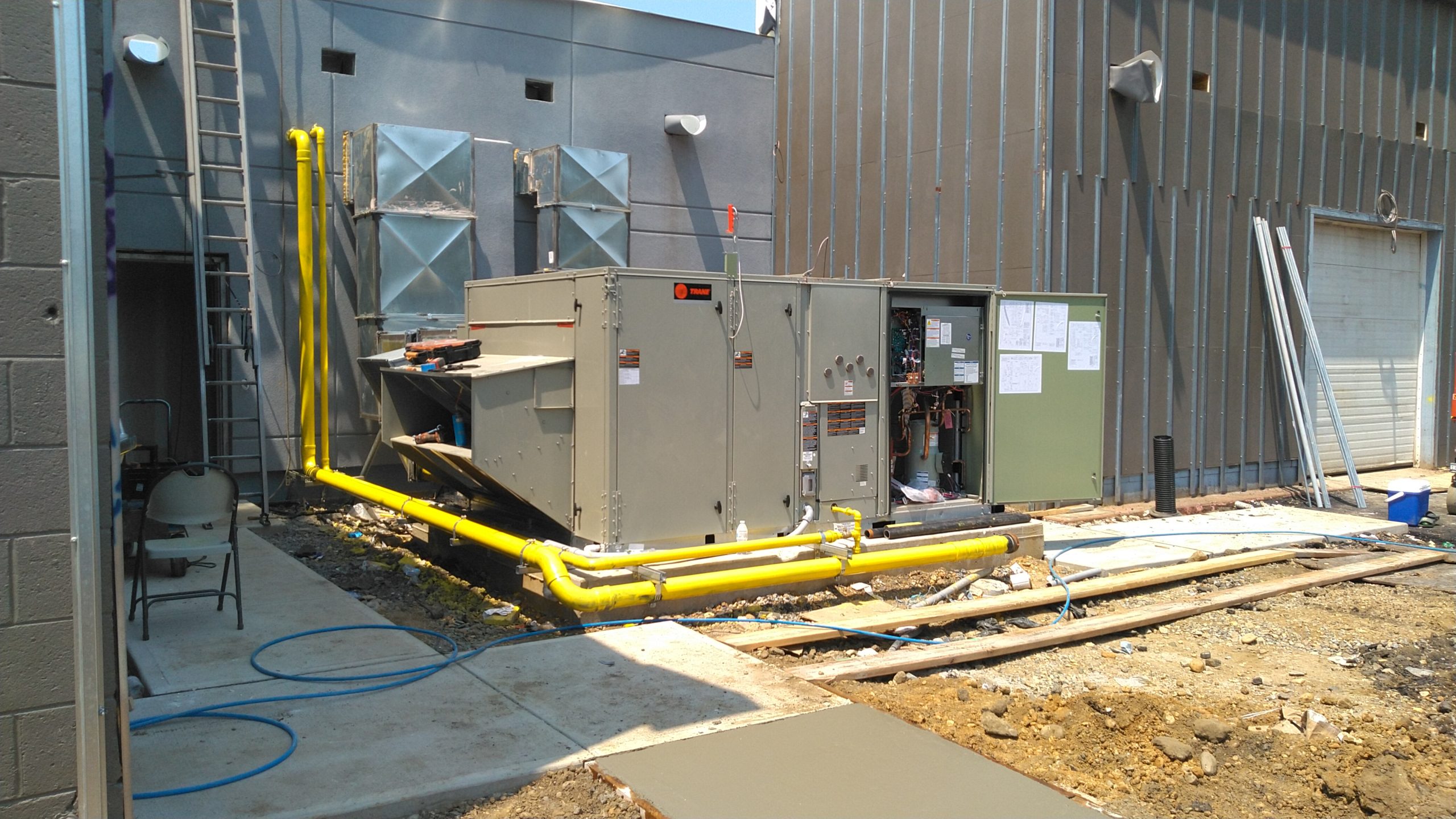
Like all major workplace utilities, general maintenance can go a long way in the quality of your commercial HVAC system. And whether you’re a first-time installer or upgrading an existing one, it’s important to know when you should schedule routine maintenance to maintain the best possible performance.
If you’re wondering whether or not it’s that time for your company’s system, we’ve provided a few commonly asked questions surrounding commercial HVAC maintenance, and how it can help you in the long run.
How Often Should You Service Your HVAC Systems?
Servicing your HVAC system improves the efficiency of the equipment and helps you prevent any future problems. You should schedule your HVAC service at least once a year, but twice a year is recommended. Aside from an annual service, make sure you’re also having your system inspected periodically in between visits. The size, age, and overall usage of your system will determine how many inspections you need.
How Long Should My System Last?
Commercial HVAC systems aren’t cheap, so it is important that your equipment outlives the investment you put towards it. That being said, there are many factors, like the size of your equipment, that will affect the longevity of the HVAC system. On average, you can expect this type of equipment to last for 10 to 15 years, but with yearly maintenance and being cognizant of needed repairs, your system could last for up to 20 years.
How Important are Air Filters?
Air filters are incredibly important as they trap dust or pollen and keep your indoor air clean. They also keep your HVAC system functioning properly by maintaining the airflow inside of the equipment. Pay extra attention to your air filters as a dirty filter will block clean airflow and prevent your HVAC equipment from working at its full potential.
Is Preventative Maintenance Necessary?
Preventative maintenance can really save your system. Having regular maintenance before any issues arise will ensure that your commercial HVAC system lasts you as long as possible. By being aware of your system’s needs and investing in professional maintenance service, you can prevent costly repairs or, in the worst-case scenario, a complete system replacement.
Luckily, Madsen is here to help! If you’re looking for a professional to service your HVAC system, contact us today. Our skilled technicians are available 24 hours a day, 7 days a week for service repairs to help you keep your workplace air safe and comfortable for your team.
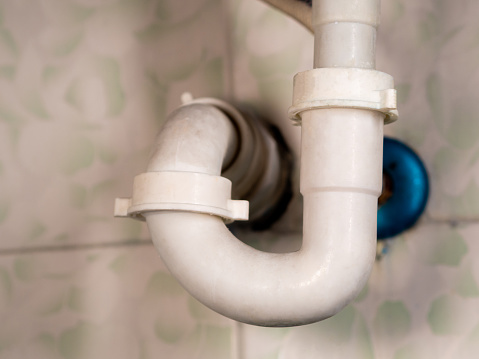
Clogged drains are pretty normal, right? They’re not something we constantly think about but we do expect them to happen — usually at the least convenient times. But just because they’re common, doesn’t mean they can’t cause more serious piping issues and flooding in your home.
The good news is there is a way to prevent that from happening: a thorough cleaning of your pipes. You just have to know what to look for. Here are 6 signs that it’s time for a professional cleaning.
- Your Toilets Overflow
When your child flushes your watch down the toilet, it’s easy to know why it’s overflowing. But when that isn’t the case, it could be your drainage lines.Your toilets are actually the most essential plumbing fixture to the overall health and sanitation of your home, so as waste and toilet paper clog up sewage drains overtime, it can cause a big mess. As soon as you notice frequent overflowing, call a professional.
- There’s Standing Water
In addition to your toilet, water back up in sinks, showers, and even washing machines are a good indicator that there’s something plugging up your pipes. Not only is it a hassle to clean, but it can be expensive to repair the damage depending on where it happens. Whether it’s hair or gunk or something you don’t even want to think about, it’s incredibly unsanitary to let it go. Don’t wait. - There’s Dish Soap or Grease Build Up
The thick consistency of dish soap can actually be pretty harmful to your drain as it slowly moves throughout your system. Obviously, it’s nearly impossible to keep it out of there completely, making it an inevitable culprit of drain issues.Reversely, you would think the slick and slippery quality of grease would help items slide on through your pipes with ease. But in reality, grease actually hardens as it sits and can cause obstruction to the water flow. If you’re cleaning up food waste with a significant amount of grease, don’t just dump it down the disposal. Instead, empty it into a bag before disposing of it in the trash.
- You Smell a Foul Odor
If you notice a weird smell in your home, and it’s not the trash, check your drains. Even if it seems to be functioning properly, that doesn’t mean there isn’t a build up somewhere in your pipes causing that unpleasant smell. The quicker you can take action and get it effectively cleaned, the better chance you have to avoid a full sewer pipe repair.
- You Hear Gurgling Noises
This is another instance where your fully functioning drain may have unknown issues emerging below the surface. When there’s an odd, gurgling sound coming from your sink, it’s most likely a clog forming. Why? Well, when water rushes past a developing clog, it creates air bubbles that eventually start making noises while your sink drains. Cleaning out those growing clogs will eliminate that sound and prevent bigger issues down the road. - Your Drain is Just Slower than Usual
This one seems pretty obvious. When it takes your sink or bathtub longer than usual to empty the water, you probably have a clog forming. While this combination of food particles, grease, soap, etc. may not be enough to completely block your pipes and cause water back up, it will at some point if you let it go.
We have even more good news: Madsen Inc is just one call away to give your pipes a thorough cleaning to eliminate current clogs and prevent any obstructions in the future. If you notice any of these signs in your home, or just want us to come take a look, contact us today.
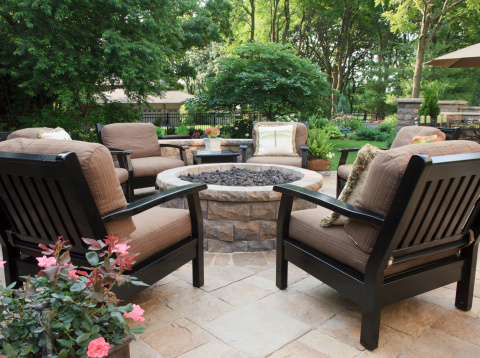
The moments we’ve been waiting for all year are finally here — kicking back and cooking out in the backyard with friends and family. Nothing beats the combo of fresh air and savory scents from the hot grill. The only problem is your home’s outdoor living space could use a little help, and even small touches can make a huge difference in terms of functionality and aesthetics. If you’ve spent all winter dreaming of a nautical escape or a modern entertaining space but aren’t sure where to begin, here are a few ideas to inspire an outdoor oasis that’s perfect for you.
Add Water to Create a Waterfront Feel
Adding a water element can elevate any outdoor area by adding a reflective and soothing element. Ponds, self-containing fountains, and pools can all crate a sense of escape and serenity with a wide range of prices and installation difficulty to fit your budgets and timeline. Water features increase the natural harmony of any outdoor space, providing calm and relief on hot summer days. Freshwater installations can bring entire ecosystems into your yard by drawing in birds, honeybees, and other local wildlife that offer the added benefits of helping your gardens and flowerbeds flourish.
Temperature Control for Indoor Comfort, Outside
Make your backyard the gathering place for your loved ones all year long by regulating temperature and ambiance of the space. By adding shades, privacy screens, or firepits, your yard can become as functional as it is beautiful. Firepits keep you warm and cozy on chilly fall nights while creating a camp-style atmosphere for the kids or a romantic aura for you.
Overhead awnings, umbrellas, and screens can minimize the summer sun rays while allowing for some much-needed privacy from surrounding neighbors without being an eyesore. An easy way to naturally blend them into your outdoor space is by opting for color tones that match the cool or warm tones of the surrounding landscape. And add a little extra decorative pop to impress guests with string lights or hanging flowerpots.
Entertainment Elements for the Host with the Most
Daydreaming of romantic candle lit dinners? Late nights toasting to good friends? Whatever your motivation, creating a mini destination out of your outdoor bar or grill area expands the possibilities for seasonal entertainment. These amenities range widely in cost based on materials and set up, allowing you to create the ideal atmosphere for you and your loved ones within your budget. Swing seats or benches relaxation and comfort, while tables, chairs, and couches with weatherproof cushions add color and functionality to your space, brightening up your oasis while providing plenty of places for you and your loved ones to relax.
When creating your outdoor space, consider some of these additions too:
- Create a prep zone to turn your grill space into a real outdoor kitchen — whether an outdoor sink with plumbing or an easy-to-clean, freestanding table.
- Consider window service if your grilling area is by the house. Add a couple of stools, master a few cocktail recipes, and you’re set!
- Add a mini fridge to keep meats out of the sun or drinks icy cold all day long.
- Utilize accent lighting to set a mood as the sun sets and help keep your space well-lit throughout the night.
Get your home ready for a summer of fun and relaxation with any of these renovation inspirations, and contact us today to discuss any of your home improvement needs.


